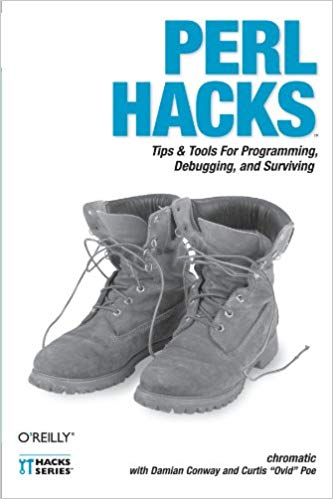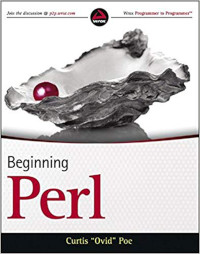The Continuum of Everything
I recently wrote about searching for extraterrestrial life in our solar system. In that post, I put forward a novel way of defining life that I call biopresentation. So it was with some surprise when I listened to a recent podcast of Isaac Arthur entitled “Post-Science Civilizations” and realized that part of what he was explaining reached right into the heart of my argument and even expanded it. Here’s the YouTube video for it:
In this, he discusses what would happen if we “run out of science,” though there are several possible paths to that. As someone who loves chess, one of the things I appreciated was him pointing out that knowing all the rules of chess doesn’t mean you’re a master of it. So if we learn all the rules of physics, that doesn’t mean we can instantly figure out what to do with them.
However, my big “a ha!” moment was Isaac Arthur pointing out that chemistry is emergent from physics and biology is emergent from chemistry. For now, we’ll avoid the obvious, and unanswerable, question: “what, if anything, is physics emergent from?”
Since chemistry emerges from physics, chemistry is physics. Since biology emerges from chemistry, biology is chemistry, but it’s physics, too. Now for some, this seems trivial. After all, we’ve learned from astronauts in microgravity that our body needs gravity to function well. But it turns out that life might not only require quantum mechanics to lead to chemistry, but life might be actively requiring quantum mechanics to continue existing. There’s an entire field called quantum biology . We’ve known for over a decade that photosynthesis might rely on “quantum coherence” to generate energy . Quantum neurophysics is a new field, too. Special relativity may be critical to our functioning, not just to our existence.
Getting back to the main point, the question we should ask is, “if biology is emergent from chemistry, where do we draw the line?”
We don’t. It’s a continuum. Rather than refer you to a previous post I wrote, I’ll repeat myself.
What Is Life?
This must be prefaced with the “life as we know it” caveat (and I’ll give examples later). And I’ll come right out and say what’s on my mind: most definitions of life are a steaming pile of shit.
One definition of life , as taken from Merriam-Webster, is “an organismic state characterized by capacity for metabolism, growth, reaction to stimuli, and reproduction.” But right off the bat we see a problem. Mules, for example, don’t reproduce. Would you say they’re not alive? Of course not. Biologists get much more sophisticated than Merriam-Webster, but many of their definitions still boil down to a true/false value.
What about fire? It reacts to stimuli and grows . We could even argue that it metabolizes—what it consumes for energy to keep growing—and reproduces by budding, but we don’t think of it as “alive.”
There are other properties of life, however. Homeostasis is the body’s ability to internally regulate itself and keep functioning. Does fire exhibit homeostasis? It’s hard to argue that it does. However, warm-blooded and cold-blooded animals have completely different approaches to homeostasis and homeostasis evolved over time , so there are different levels of homeostasis. Maybe we can argue that humans have a homeostasis level of ten while fire has a homeostasis level of one? A piece of flint, however, would have a homeostasis level of zero.
But why would we argue that?
Life as Biopresentation
When I was working on ETL systems to reduce the cost of Phase III clinical trials , I often found myself working with data supplied by many pharmaceutical companies. Company A might refer to “Dr. Robert Smith, St. Mary’s Hospital, Arlington, Virginia.” Company B might refer to “Dr. Bob Smith, St. May’s Hospital, Arlington, Virginia.” Are they the same person? “St. May’s Hospital” might be a typo. “Bob” is short for “Robert.” Maybe they are the same person.
In reality, it’s hard to definitively state “yes” or “no.” Instead, I had access to tons of information about each researcher, including email addresses, phone numbers, birth dates, and so on. I would assign scores (how reliable) and weights (how important) to each piece of data and if two researchers crossed a certain threshold, they were probably the same researcher and we didn’t have to spend valuable time and money trying to manually verify this.
This same approach should be taken to the definition of life. Instead of life being a binary “yes or no,” we should describe its “biopresentation,” or “how present are the signs of life in a ‘thing.'” So for a virus:
| Property | Score | Weight | Value |
|---|---|---|---|
| Metabolism | 1 | 5 | 3 |
| Homeostasis | 0 | 4 | 0 |
| Growth | 0 | 2 | 0 |
| Reproduction | 3 | 4 | 12 |
| Communication | 1 | 5 | 5 |
In the above, a virus might have a biopresentation of 20. A human, however, would be radically different:
| Property | Score | Weight | Value |
|---|---|---|---|
| Metabolism | 5 | 5 | 25 |
| Homeostasis | 5 | 4 | 20 |
| Growth | 5 | 2 | 10 |
| Reproduction | 5 | 4 | 20 |
| Communication | 5 | 5 | 25 |
A human might have a biopresentation score of 100.
This would be particularly useful in describing abiogenesis. One hypothesis of abiogenesis is :
- Prebiotic atmosphere with ammonia, carbon dioxide and water vapor.
- Lightning produces simple organic compounds that fall into solution in shallow water.
- The compounds react further in a prebiotic broth, forming amino acids.
- The amino acids link up with peptide bonds to form polypeptide chain proteins.
- The proteins combine into more complex molecules that can replicate and metabolize simple substances.
- Complex molecules and organic compounds form lipid membranes around themselves and start acting like living cells.
Traditionally, at step six is when we think “life”, but for biopresentation, we might starting thinking “lifelike” at step five. Maybe even four. Instead of life being a fixed point, it’s a gradual process. We don’t point to a thing and say “this is alive” because that gets us back to the arguments of what life is or isn’t. We simply describe its biopresentation.
This would be useful for biology today, too. Consider the endless arguments about whether or not viruses are live . It’s often argued that viruses aren’t alive because they can’t metabolize outside of their host. That reduces metabolism to the primary (or sole) attribute of life. But metabolism is the global term for anabolism and catabolism . Catobolism is just breaking complex stuff into simpler stuff while anabolism is using that simpler stuff to do more complex stuff. Fire catabolizes, but doesn’t anabolize. Viruses do both. So maybe they’re alive? But some still reject that because, again, they can’t do that without a suitable host.
But what’s a host? Obligate parasites such as the protozoan Plasmodium can’t survive outside of their hosts. Or consider humans. If I drop you into the middle of interstellar space without a space suit, you’ll stop metabolizing, too. So the context in which we can biopresent is also a spectrum. Viruses are starting to look more alive.
But wait! There’s more!
Most living beings have some ability to communicate with one another. Maybe all do. As it turns out, we’ve know for a few years that viruses can do this, too . The human communication score might be at a “ten,” while viral communication might be a “one,” but fire’s communication is “zero.” The weight of this factor is probably pretty high, so fire’s biopresentation would be pretty low, but viruses could be easily crossing the threshold.
Pragmatist that I am, I want to skip the philosophical debates about whether or not something is alive and go with the pragmatic discussion of how closely something resembles life. However, we can’t ignore the philosophical implications.
Objections to Biopresentation
At this point, I can see many biologists howling at the above. In a 2013 Wired article entitled It’s (Almost) Alive! Scientists Create a Near-Living Crystal , the lede reads:
Three billion years after inanimate chemistry first became animate life, a newly synthesized laboratory compound is behaving in uncannily lifelike ways. The particles aren’t truly alive — but they’re not far off, either.
The crystals created had metabolism and mobility, but couldn’t reproduce. You can read the original study at The Royal Society website .
For these crystals, one could argue that a), they’re not alive, or b), what their relative biopresentation level is. Some people would be uncomfortable describing crystals as alive, but if we’re to search for life elsewhere in the universe, are we going to argue that life which doesn’t share the same biochemical basis as our own isn’t alive?
Or consider self-replicating Von Neumann machines . By the biopresentation argument, they would likely score very high, but are machines “alive”? Or apply biopresentation to The Gaia Hypothesis . Is our planet alive? That’s definitely a philosophical question, but in light of biopresentation, depending on what factors to include, we could make a strong argument that it is.
Why is rethinking life important?
If we go with a binary “yes/no” for life, it means that we have defined a limited, possibly incorrect, set of properties necessary to define life. Something not meeting those conditions might be disregarded. If, however, biopresentation is adopted, we can start defining “lifelike” properties and perhaps not be so quick to dismiss something that is otherwise alive.
Is Biology the Continuum’s End?
If biology stems from chemistry stems from physics, is that the entire continuum? I don’t think it is. I think it’s pretty hard to describe viruses as being very sentient (the ability to feel and perceive things), but fish are. By the same token, it might be hard to describe fish as being particularly sapient (the ability to learn, self-reflect, and so on), though again, both sentience and sapience are probably continuums, as are most things complex.
So clearly biology can lead to sentience and sapience, but do they require biology? Possibly not. Consider the recent case of Blake Lemoine who contended that some of Google’s software had become self-aware . While I tend to agree with Google that Lemoine was wrong, I am not so sure how long I can hold that position in the face of greater AI advancements. Since this is just electrons flying around silicon, can we argue that sapience doesn’t require biology? If so, the continuum could be across a tree or graph instead of a line. Or since humans built this, does that make the argument moot? I don’t think this is possible to answer, but it raises other interesting questions.
If we have a complicated chemical reaction that biopresents as zero (“pure chemistry”), could sentience or sapience emerge from that? Could sapience emerge from pure physics? This gets into the metaphysical realm and we cannot answer that. It starts teasing out hints of a god or gods. While I am an atheist, many of my friends are not and these question approach the realm of the ineffable, a term frequently applied to God. I worry that I sound like the atheist equivalent of Reverend Teilhard de Chardin , a Catholic priest who tried to unify science and religion.


